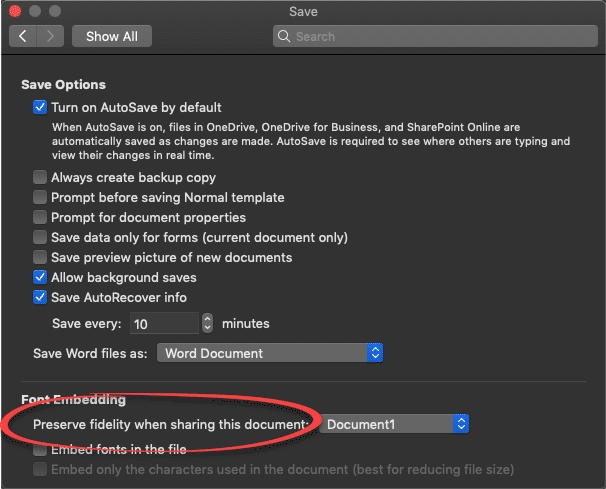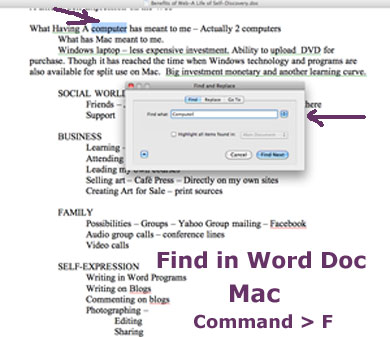Note: Preview can only search a searchable PDF on mac. Open PDF with Preview. Go to FileEditFind. Or you can use search toolbar in the window, even press “Command+F” to search a pdf on mac. Input the key word you want to search in the field and the word will be highlighted in yellow as following. Find text in PDFs in Preview on Mac. You can open a PDF or other document in Preview, then search for a word or any set of characters. If you can’t see the search field at the top right of the document window, drag the window’s edge (top, bottom, or sides) to enlarge the window.
- How To Search A Document For A Word On A Mac Download
- How To Search A Document For A Word On A Mac Free
- How To Find A Word On Mac
You can search for specific words, phrases, numbers, and characters, and automatically replace search results with new content that you specify. All visible content in the document—the main body text, headers and footers, tables, text boxes, shapes, footnotes and endnotes, and comments—is included in the search.
Search for specific text

Click in the toolbar, then choose Show Find & Replace.
In the search field, enter the word or phrase you want to find.
Matches are highlighted as you enter text.
To find words that match the capitalization you specify, or to restrict search results to the whole words you entered, click , then choose Whole Words or Match Case (or both).
Click the arrow buttons to find the next or previous match.
In a table cell, Pages matches only the value that’s displayed, not the underlying value or formula. For example, if a recipe calls for “1/2 cup,” a search for “0.5” has no matches.
To see or clear recent searches, click the magnifying glass in the search field.
Replace found text
Click in the toolbar, then choose Show Find & Replace.
Click in the Find & Replace window, then choose Find & Replace.
You can also choose other options, such as Whole Words and Match Case, to refine your search.
Enter a word or phrase in the first field.
As you enter text, matches are highlighted. The first match is selected and highlighted in yellow.
Enter the replacement word or phrase in the second field.
Important: If you leave the Replace field blank, all instances of the text are deleted when you replace the found text.
Use the buttons at the bottom of the Find & Replace window to review and change the text matches:
Replace All: Replaces all text matches with the replacement text.
Replace & Find: Replaces the selected match and moves to the next.
Replace: Replaces the selected match with the replacement text but doesn’t move to the next match.
Previous and Next arrows: Move to the previous or next match without making a change.
Replacing a table value updates both the displayed value and the underlying value. For example, if you replace “1/2” with “1/3,” the underlying value changes from “0.5” to “0.333333.”
You can’t replace matching text in table cells that contain a formula.
Losing a word document could give you a heart attack. The lost document may be an assignment, a report or article that you have been working for days, weeks or even months. Sometimes, the Word crashed or your Mac suddenly shut off, leaving the Word document you are working on unsaved. Or you accidentally saved over a Word document on Mac, thus the document is overwritten. Even worse, the lost Word document might has been deleted by mistake.
Whether you need to recover an unsaved or deleted Word document on Mac, this article can give you some hints. Read the methods below to recover Word document on Mac.
Visio viewer for macbook pro. You May Like:
How to Recover Unsaved Word Document 2019/2017/2016/2011 on Mac
The good news is that by default, Word on Mac enables an autosave feature which automatically save the document you are working on every 10 minutes in the AutoRecovery folder. It is very likely that you can recover the document that you didn't save with the autosave files.
Note: The prerequisite for Word AutoRecover to work on Mac is that you have saved the document for at least one time. That is to say, if you just create a Word file, make some edits and then close the file by clicking Don't Save, there is no available AutoRecover file to recover the unsaved document.
If Word or Mac system crashed
After an application(such as Microsoft Office) crashes or macOS freezes, the next time you open Word, an AutoRecover file will be automatically opened and you can save it and pick up where you left off.
In the ideal world, you should see the unsaved document right after you relaunch Word. However, if things doesn't work as expected, you can find Word's autosave location on Mac and automatically recover the unsaved document.
AutoRecover files in Word 2011 for Mac
To recover unsaved Word document on Word 2011 on Mac, there are two ways.
1. Open AutoRecover files
Step 1 On Word, click File > AutoRecover.
Step 2 You should be seeing a list of AutoRecover files. According the saving date, open the unsaved file you are looking.
2. Locate AutoRecovery folder on Mac
Step 1 Open Finder.
Step 2 Press Alt key while clicking Go to reveal Library folder.
Step 3 Go to the Word autosave location: Library/Application Support/ Microsoft/Office/Office 2011 AutoRecovery.
AutoRecover files in Word 2016/2017 for Mac
There are also two methods to recover a Word document that was not saved on Mac for Word 2016, 2017 or newer.
So I searched up groups with that one same interest as the first group and found many. Kik for mac. After that, I decided to not join any groups for a while. People were really nice I guess-one person welcomed me, others just ignored me minding their own business and that was fine by me. I even started opening up and talking to some members and it actually wasn't awful, but I did leave because one people weren't really talking much though there were like more than 40 people that joined and two there was lots of cursing. But a few days ago, I was like'Hey, why not join another group like the one I joined?'
1. Go to Microsoft User Data folder
Step 1 Close Microsoft Word on Mac.
Step 2 Open Finder > Documents > Microsoft User Data folder.
Step 3 Look through the files that are named 'AutoRecovery save of' and find the autosave files you need.
If you have problem in opening the AutoRecover Word files, rename the files and add '.doc' to the file extension.
2. Go to AutoRecovery folder
Step 1 Open Finder. Click Go > Go to folder.
Step 2 Enter the path as follow:
~/Library/Containers/com.microsoft.Word/Data/Library/Preferences/AutoRecovery.
If you fail to recover unsaved Word documents with AutoRecover files, you can also check temporary folder on Mac, which may contain the files you are looking for.
Recover unsaved Word document with Mac Temporary folder
Step 1 Launch Terminal with Spotlight or go to Applications > Utilities.
Step 2 Enter the command line: open $TMPDIR. Hit Enter.
Step 3 The temporary folder will be open. Check if there is the Word document that you didn't save.
Accidentally Saved Over a Word Document on Mac
When you accidentally saved over a Word document that you actually need on Mac, you can try to recover the Word document from AutoRecovery folder. And if it doesn't work, try to recover the previous version of the document from Time Machine backups on Mac.
Step 1 Open Time Machine with Spotlight.
Step 2 Find the files you want to restore.
Step 3 Click Restore to restore the Word file.
How to Recover Lost/Deleted Word Documents on Mac
If you have Word documents that you have deleted mistakenly, FonePaw Data Recovery can recover the deleted Word documents for you. And sometimes, when you cannot find the unsaved documents from AutoRecovery folder, you may use the program to see if it can scan out the files that you need.
And after a Word document is deleted or lost, you should run FonePaw Data Recovery as soon as possible because the deleted document can be covered by new data on your Mac anytime. A rule of thumb for successful data recovery is Act Fast.
DownloadDownload
Step 1 Run FonePaw Data Recovery for Mac.
Step 2 To recover deleted Word documents from Mac drive, click Documents and select the drive that the deleted Word files were saved. Click Scan.
Step 3 The program will begin to scan and find the deleted documents on the drive, which include deleted Word, Excel, PDF, PPT and more.
Step 4 When the scanning stops, click DOC or DOCX and view if the deleted files you need are found. If not, click Deep Scan to find the deleted files are buried deeper.
Step 5 When you see the Word files you want to recover, click Recover.
How To Search A Document For A Word On A Mac Download
Tips: Avoid Data Loss in Word for Mac
Set a shorter AutoRecover interval. By default, Word automatically save a copy of the Word document you are working on every 10 minutes. You can shorten the interval. On Word, go to Preferences > Output > Sharing > Save > Save every XX minute. For example, enter 5 to save a Word document every 5 minute.

Enable AutoSave if you are subscribed to Word for Office 365. With AutoSave enable, Word saves the changes you made every few seconds so you don't need manually click the Save button. Even if Word crashes unexpectedly, most changes on a document are saved automatically.
How To Search A Document For A Word On A Mac Free
How To Find A Word On Mac
- Hot Articles
- PDF Recovery: How to Recover and Repair PDF Files
- [Guide] Undo Shift Delete and Recover Shift Deleted Files (Windows 10/8/7)
- Excel AutoSave Location: Where to Find and Recover Unsaved Excel Files (2016/2013/2007/2003)
- PowerPoint Recovery: How to Recover Deleted or Unsaved PowerPoint (2007/2010/2013/2016)
- How to Find Deleted iMessages on Mac (MacBook, iMac, Mini)
- How to Find Deleted History on Mac and iOS Device (Safari)
- Mac Trash Recovery: How to Recover Trash on Mac
- How to Recover Deleted/Lost Notes on Mac
- Microsoft Word Not Responding, How to Fix and Save Document?